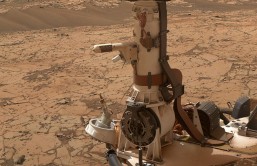Technology is fast improving, and with every blink of an eye, humanity is becoming more and more intertwined with robotics and artificial intelligence. Today, robots and drones are having more sophisticated vision features, making science fiction slowly turn into scientific reality.
Most of these drones and other robotic gadgets are developed by Nvidia's Jetson TX1 to enable auto navigation as well as avoiding collisions. The Nvidia Jetson TX1 has the capability to give off live feeds and also analyze the processed visualizations.
The very first Nvidia Jetson TX1 was out in the market in the beginning of 2016. However, advancements and improvements in technology are going to make drones and robots smarter than ever.
The Nvidia Jetson TX1 is the Future
The new improvement also ensures that the Nvidia Jetson TX1 will be more reliable in processing surveillance imaging and visualizations. A surveillance drone camera that features a Nvidia Jetson TX1 is just like coming out straight from a science fiction movie as it is capable of recognizing faces, identifying objects on its visuals and also count the number of persons, animals or any object that it sees.
Larger and more powerful Nvidia Jetson TX1s can be made with teraflops of computing power. If this trend continues in the next five years, then artificial intelligence will increase exponentially. Image recognition is evolving very fast, and with it comes the faster and smarter classification of pixels that are visualized.
Getting to Know the Nvidia Jetson TX1
The Jetson TX1's processing capabilities are not as powerful as that of the servers, however, it is sufficient in cross-referencing the visualized objects. According to Deepu Talla, general manager and vice president of Tegra products in Nvidia, the current drones, and robots that are using the supercomputer is already twice more powerful than the first editions that came out in the first quarter of 2016.
Improvements in thinking capabilities depend on the capability of the Nvidia Jetson TX1 to process loads of information simultaneously. Fortunately, Nvidia supports CUDA 8, which will streamline the process for further improvements.
Now, a 4K camera can be attached to a drone or robot and is still able to analyze the situation with utmost precision.The Nvidia Jetson TX1 features a quad-core 64-bit ARM CPU and GPU running on Maxwell architecture and is priced at $600.








